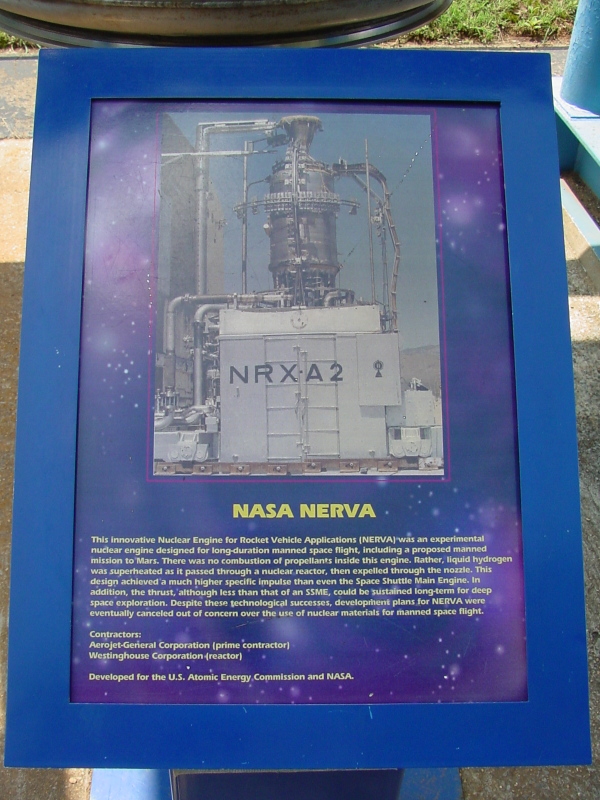| Prev |
heroicrelics.org U.S. Space & Rocket Center Site Index NERVA Engine Gallery |
Next |
dsc03442.jpg
The sign which accompanied the NERVA engine. It reads
NASA NERVA
This innovative Nuclear Engine for Rocket Vehicle Applications (NERVA) was an experimental nuclear engine designed for long-duration manned space flight, including a proposed manned mission to Mars. There was no combustion of propellants inside this engine. Rather, liquid hydrogen was superheated as it passed through a nuclear reactor, then expelled through the nozzle. This design achieved a much higher specific impulse than even the Space Shuttle Main Engine. In addition, the thrust, although less than that of an SSME, could be sustained long-term for deep space exploration. Despite these technological successes, development plans for NERVA were eventually canceled out of concern over the use of nuclear materials for manned space flight.
Contractors:
Aerojet-General Corporation (prime contractor)
Westinghouse Corporation (reactor)Developed for the U.S. Atomic Energy Commission and NASA.

| Time picture taken | Fri Jun 20 13:55:56 2003 |
| Location picture taken |
Rocket Park U.S. Space & Rocket Center Huntsville, AL |
| Prev |
heroicrelics.org U.S. Space & Rocket Center Site Index NERVA Engine Gallery |
Next |